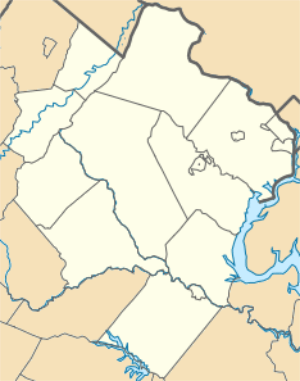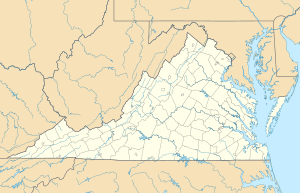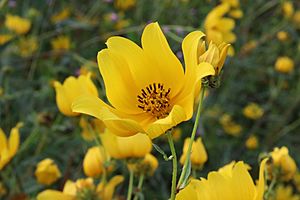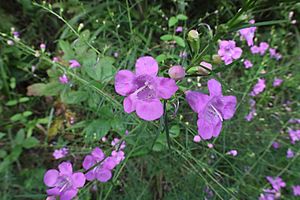Occoquan Bay National Wildlife Refuge facts for kids
Quick facts for kids Occoquan Bay National Wildlife Refuge |
|
|---|---|
|
IUCN Category IV (Habitat/Species Management Area)
|
|
 |
|
| Location | Prince William County, Virginia, United States |
| Nearest city | Woodbridge, Virginia |
| Area | 644 acres (261 ha) |
| Established | 1998 |
| Governing body | U.S. Fish and Wildlife Service |
| Website | Occoquan Bay National Wildlife Refuge |
The Occoquan Bay National Wildlife Refuge is a special place where nature is protected. It's found in Woodbridge, Virginia, where the Occoquan River meets the big Potomac River. This refuge is about 644 acres big, and half of it is wetlands. Wetlands are like soggy lands, important for many plants and animals.
This area used to be a popular beach called Dawson Beach until the 1940s. Later, from the 1960s to the 1990s, the U.S. Army used it for military research. In 1998, it became a protected area. The United States Fish and Wildlife Service now takes care of this important wildlife home.
Discovering Occoquan Bay's Nature
For many years, the U.S. Army used this land for secret research. They kept the grass short for their work. This actually helped create open grasslands, which are now great homes for animals. When the Army left, the United States Fish and Wildlife Service made sure these grasslands stayed protected.
The refuge has many different types of homes for animals. These include wet meadows, thick forests, and open grasslands. About half of the refuge is wetlands. These wetlands have marshes and streams that are affected by the tides. There are also dry meadows and forests with oak, hickory, and beech trees.
Having so many different habitats in one place is special. It means visitors can see a wide variety of wildlife. The refuge is famous for birds that nest in grasslands. It's also a stop for birds that travel long distances. Many birds of prey, like hawks and eagles, also live here.
Over 220 kinds of birds have been seen at the refuge. More than 600 types of plants grow here too. You can also spot 65 different kinds of butterflies. Many of the bird species found here are rare in this part of Virginia.
Visiting the Refuge
You can explore the refuge on foot or by vehicle. There are about 4 miles of old patrol roads for walking. These roads are split into three loops, each about 2 miles long. You can find maps and information at the visitor station and at the start of the trails.
There's also a 2-mile road called Wildlife Drive. You can drive or bike on this road. Staying in your car can help you see animals up close. It's like your car becomes a "mobile blind," letting you watch wildlife without scaring them. Remember to stay in your vehicle while on Wildlife Drive.






